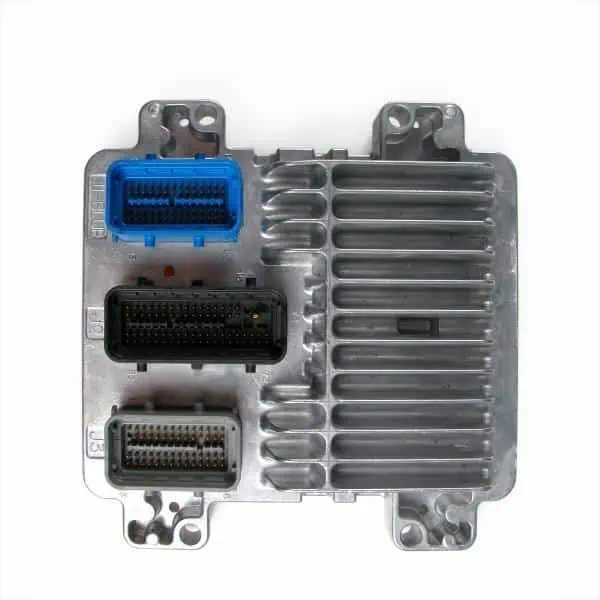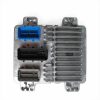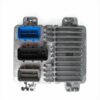Is Your 2006 Isuzu I-350 Running Rough? The PCM Might Be the Culprit.
If you’re dealing with frustrating engine problems like stalling, poor fuel economy, or a persistent check engine light on your 2006 Isuzu I-350, the issue may lie with a failing Powertrain Control Module (PCM). As the central computer for your truck’s engine and transmission, the PCM is responsible for managing everything from fuel injection and ignition timing to emission controls and shift points. When it begins to fail, it can cause a wide range of confusing and intermittent issues that are often misdiagnosed, leading to wasted time and money on unnecessary parts.
Diagnosing a Failing Powertrain Control Module
A faulty PCM can manifest in numerous ways, often mimicking the symptoms of other failing components like sensors or fuel pumps. The key is often in the inconsistency of the problems or the presence of multiple, seemingly unrelated issues happening at once. If your mechanic is stumped or you’ve replaced several parts with no improvement, it’s time to consider the vehicle’s computer. This module is the solution to restore your truck’s original performance and reliability.
From the Diagnostic Bay
We had a 2006 Chevy Colorado (which shares the same platform and PCM as the I-350) come into the shop with a maddening intermittent no-start condition. The owner had already replaced the battery, starter, and crankshaft position sensor. It would run perfectly for days, then refuse to start for an hour. Our diagnostics showed no communication with the PCM during the no-start events. After confirming all power and ground connections to the module were solid, we installed one of our VIN-programmed PCMs. The truck fired up instantly. We performed the security relearn, and the customer reported back a month later that the problem was completely gone. It’s a classic case of a failing PCM causing ghost-like issues that defy normal troubleshooting.
Why Choose Our Programmed 2006 Isuzu I-350 PCM?
This isn’t just a replacement part; it’s a complete, ready-to-install solution. We take a genuine OEM module and flash it with the latest, most up-to-date software from GM, specifically matched to your vehicle using the VIN you provide. This critical step ensures that your truck operates exactly as the manufacturer intended, with all software patches and performance improvements included. By programming the module before we ship, we eliminate the need for an expensive trip to the dealership for programming, saving you hundreds of dollars and significant downtime.
Common Symptoms of a Bad PCM
- ✔ Unexplained Check Engine Light (CEL) illumination, often with communication error codes (U-codes).
- ✔ Engine stalling, cutting out, or stumbling, especially when warm or under load.
- ✔ Rough or erratic idling and engine misfires.
- ✔ A noticeable decrease in fuel economy.
- ✔ Harsh, delayed, or incorrect transmission shifting.
- ✔ Complete no-start or hard-starting conditions where the engine cranks but won’t fire.
- ✔ Inconsistent operation of electronic components like cooling fans.
Simple Installation and Setup
Replacing the PCM is a straightforward process for any DIY mechanic. The module is typically located on the right-hand (passenger side) firewall in your Isuzu I-350. Simply disconnect the negative battery terminal, unplug the electrical connectors from the old module, unbolt it, and install the new one in its place. After reconnecting the battery, you will likely need to perform a simple security relearn procedure, which does not require any special tools. This procedure syncs the new PCM with your vehicle’s anti-theft system.
Standard Security Relearn Procedure (Passlock):
- Turn the key to the ‘ON’ position (do not start the engine).
- Observe the security/theft light on the dash. It will likely be on or flashing. Leave the key ‘ON’ for 10-11 minutes until the light turns off.
- Turn the key ‘OFF’ for 10 seconds.
- Repeat steps 1-3 two more times for a total of three 10-minute cycles.
- After the third cycle, the vehicle should start and run normally.
Guaranteed Compatibility
This module is a direct replacement for a wide range of GM trucks and SUVs from this era. It is compatible with part numbers: 12569773, 12588650, 12589311, 12589585, 12591647, 12591648, 12593531, 12593532, 12594430, 12594431, 12596783, 12596784, 12597521, 12597776, 12597777, 12600818, 12604438, 12604439, 12606369, 12606373, 12606374, 12606398, 12606399, 19209820, and 19209821. It fits models like the Chevy Colorado, GMC Canyon, Hummer H3, Buick Rainier, Chevy Trailblazer, GMC Envoy, and Saab 9-7X. Please verify your model and year in the fitment list to ensure perfect compatibility.
Frequently Asked Questions
Why do you need my Vehicle Identification Number (VIN)?
Your VIN is essential for us to program the PCM with the exact software and calibrations your 2006 Isuzu I-350 requires. This includes specifications for the engine, transmission, emissions equipment, and other factory options, ensuring seamless integration and proper vehicle function.
Is this a simple plug-and-play installation?
For the most part, yes. The module is physically a direct swap. After installation, you will need to perform a security relearn procedure as detailed above. This procedure syncs the module to your vehicle’s anti-theft system and does not require any special scan tools.
Will I need to take my truck to a dealer after installation?
No. Our service is designed to eliminate the need for a dealership visit. Because we program the module with the latest GM software using your VIN before shipping, you will not need any additional programming after you install it.
What is a security relearn procedure?
It is a simple process that allows your vehicle’s anti-theft system (often called Passlock or Passkey) to recognize the new PCM. It typically involves a series of key-on/key-off cycles that take about 30 minutes to complete. We provide instructions for this process.
Does this module also control the transmission?
Yes, the Powertrain Control Module (PCM) manages both engine and transmission functions. If you are experiencing erratic shifting, torque converter lockup issues, or transmission-related trouble codes, a faulty PCM can often be the root cause.


